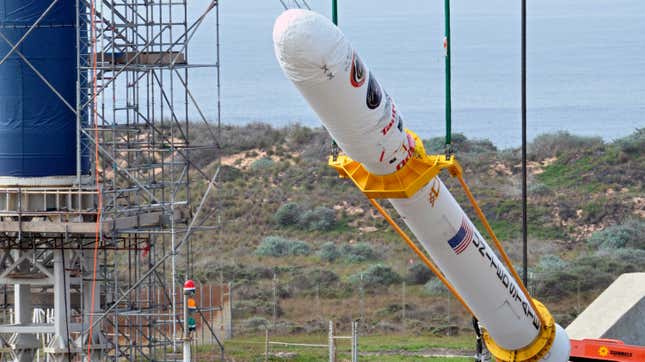
NASA has found its loss of two 92-foot Taurus rockets—as well as the climate-monitoring satellites they were carrying—in 2009 and 2011 was due to a supplier that falsified test data about frangible joints that were supposed to split and release the rockets’ fairings, according to Quartz.
According to a NASA Launch Services Program (LSP) report released on April 30, agency engineers have determined that Oregon aluminum extrusion manufacturer Sapa Profiles, Inc. (ISP) had doctored failed test results, swapped out measurements from acceptably-made batches, or altered the conditions of testing to ensure a favorable result. They then shipped out the poorly-made parts to clients, one of which was Orbital Sciences (now Northrop Grumman Innovation Systems), the manufacturer of Taurus rockets. As a result, NASA determined, the clamshell-style nosecones of the rockets carrying the Orbiting Carbon Observatory and Glory satellites failed to fall off on command due to SPI’s faulty frangible joints surviving explosive charges.
Both Taurus rockets then plummeted to their doom in the ocean, with NASA LSP writing in their report that the “combined cost of both mission failures was in excess of $700,000,000.”
“NASA relies on the integrity of our industry throughout the supply chain,” NASA director for Launch Services Jim Norman said in a separate statement. “While we do perform our own testing, NASA is not able to retest every single component. That is why we require and pay for certain components to be tested and certified by the supplier. When testing results are altered and certifications are provided falsely, missions fail.”
NASA referred its findings to the NASA Office Inspector General and the Department of Justice, who determined that SPI was motivated by a desire to conceal its shoddy workmanship and incentivized staff to help cover their tracks by offering production-based bonuses.
According to a Department of Justice press release on April 23, SPI’s parent company Norsk Hydro ASA has agreed to a deal in which it would pay out $46 million to NASA, the Department of Defense, and other entities to “resolve criminal charges and civil claims relating to a 19-year fraud scheme that included falsifying thousands of certifications for aluminum extrusions provided to hundreds of customers.”
NASA’s statement also said that SPI and Norsk Hydro ASA have both been suspended from government contracting (the former company since 2015), and NASA has proposed both companies receive government-wide disbarment. Quartz speculated that the release of the report may have been motivated by the company’s continued denial it was at fault.
The Orbiting Carbon Observatory never went into service, but a replacement made it to space in 2014 and another successor is scheduled to launch in May. Glory did not receive a replacement.
Correction 5/3/19: A previous version of this article stated that Orbital Sciences was rebranded as Orbital ATK but it was actually later rebranded as Northrop Grumman Innovation Systems in 2018. We regret the error.
[Quartz]